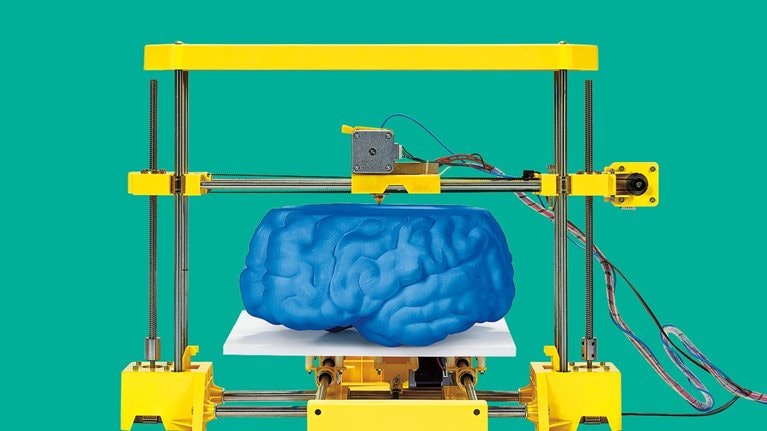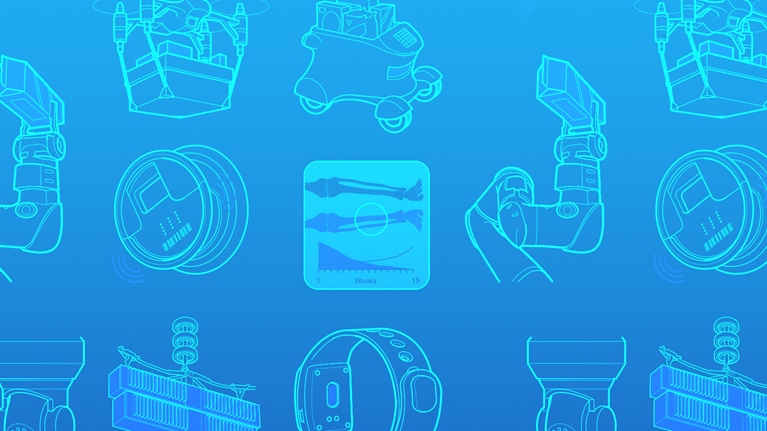With so many perspectives on the impact of artificial intelligence (AI) flooding the business press, it’s becoming increasingly rare to find one that’s truly original. So when strategy professor Ajay Agrawal shared his brilliantly simple view on AI, we stood up and took notice. Agrawal, who teaches at the University of Toronto’s Rotman School of Management and works with AI start-ups at the Creative Destruction Lab (which he founded), posits that AI serves a single, but potentially transformative, economic purpose: it significantly lowers the cost of prediction.
In his new book, Prediction Machines: The Simple Economics of Artificial Intelligence, coauthored with professors Joshua Gans and Avi Goldfarb, Agrawal explains how business leaders can use this premise to figure out the most valuable ways to apply AI in their organization. The commentary here, which is adapted from a recent interview with McKinsey’s Rik Kirkland, summarizes Agrawal’s thesis. Consider it a CEO guide to parsing and prioritizing AI opportunities.
The ripple effects of falling costs
When looking at artificial intelligence from the perspective of economics, we ask the same, single question that we ask with any technology: What does it reduce the cost of? Economists are good at taking the fun and wizardry out of technology and leaving us with this dry but illuminating question. The answer reveals why AI is so important relative to many other exciting technologies. AI can be recast as causing a drop in the cost of a first-order input into many activities in business and our lives—prediction.
We can look at the example of another technology, semiconductors, to understand the profound changes that occur when technology drops the cost of a useful input. Semiconductors reduced the cost of arithmetic, and as they did this, three things happened.
First, we started using more arithmetic for applications that already leveraged arithmetic as an input. In the ’60s, these were largely government and military applications. Later, we started doing more calculations for functions such as demand forecasting because these calculations were now easier and cheaper.
Second, we started using this cheaper arithmetic to solve problems that hadn’t traditionally been framed as arithmetic problems. For example, we used to solve for the creation of photographic images by employing chemistry (film-based photography). Then, as arithmetic became cheaper, we began using arithmetic-based solutions in the design of cameras and image reproduction (digital cameras).
The third thing that happened as the cost of arithmetic fell was that it changed the value of other things—the value of arithmetic’s complements went up and the value of its substitutes went down. So, in the case of photography, the complements were the software and hardware used in digital cameras. The value of these increased because we used more of them, while the value of substitutes, the components of film-based cameras, went down because we started using less and less of them.
Discover and subscribe to McKinsey Quarterly Audio
Five ways to subscribe:
Expanding our powers of prediction
As the cost of prediction continues to drop, we’ll use more of it for traditional prediction problems such as inventory management because we can predict faster, cheaper, and better. At the same time, we’ll start using prediction to solve problems that we haven’t historically thought of as prediction problems.
For example, we never thought of autonomous driving as a prediction problem. Traditionally, engineers programmed an autonomous vehicle to move around in a controlled environment, such as a factory or warehouse, by telling it what to do in certain situations—if a human walks in front of the vehicle (then stop) or if a shelf is empty (then move to the next shelf). But we could never put those vehicles on a city street because there are too many ifs—if it’s dark, if it’s rainy, if a child runs into the street, if an oncoming vehicle has its blinker on. No matter how many lines of code we write, we couldn’t cover all the potential ifs.
Today we can reframe autonomous driving as a prediction problem. Then an AI simply needs to predict the answer to one question: What would a good human driver do? There are a limited set of actions we can take when driving (“thens”). We can turn right or left, brake or accelerate—that’s it. So, to teach an AI to drive, we put a human in a vehicle and tell the human to drive while the AI is figuratively sitting beside the human watching. Since the AI doesn’t have eyes and ears like we do, we give it cameras, radar, and light detection and ranging (LIDAR). The AI takes the input data as it comes in through its “eyes” and looks over to the human and tries to predict, “What will the human do next?”
The AI makes a lot of mistakes at first. But it learns from its mistakes and updates its model every time it incorrectly predicts an action the human will take. Its predictions start getting better and better until it becomes so good at predicting what a human would do that we don’t need the human to do it anymore. The AI can perform the action itself.
The growing importance of data, judgment, and action
As in the case of arithmetic, when the price of prediction drops, the value of its substitutes will go down and the value of its complements will go up. The main substitute for machine prediction is human prediction. As humans, we make all kinds of predictions in our business and daily lives. However, we’re pretty noisy thinkers, and we have all kinds of well-documented cognitive biases, so we’re quite poor at prediction. AI will become a much better predictor than humans are, and as the quality of AI prediction goes up, the value of human prediction will fall.
But, at the same time, the value of prediction’s complements will go up. The complement that’s been covered in the press most is data, with people using phrases such as “data is the new oil.” That’s absolutely true—data is an important complement to prediction, so as the cost of prediction falls, the value of a company’s data goes up.
But there are other complements to prediction that have been discussed a lot less frequently. One is human judgment. We use both prediction and judgment to make decisions. We’ve never really unbundled those aspects of decision making before—we usually think of human decision making as a single step. Now we’re unbundling decision making. The machine’s doing the prediction, making the distinct role of judgment in decision making clearer. So as the value of human prediction falls, the value of human judgment goes up because AI doesn’t do judgment—it can only make predictions and then hand them off to a human to use his or her judgment to determine what to do with those predictions.
Another complement to prediction is action. Predictions are valuable only in the context of some action that they lead to. So, for example, one of the start-ups we work with at the Creative Destruction Lab built a very good demand-forecasting AI for perishable food such as yogurt. Despite its accuracy, this prediction machine is worth zero in the absence of a grocery retailer deciding how much yogurt to buy. So, besides owning data as an asset, many incumbents also own the action.

Notes from the AI frontier: Applications and value of deep learning
A thought experiment for the top team
One approach to pinpoint ways to use AI in business is to review organizational workflows—the processes of turning inputs into outputs—and break them down into tasks. Then, look for the tasks that have a significant prediction component that would benefit from a prediction machine. Next, determine the return on investment for building a prediction machine to do each task, and simply rank those tasks in order from top to bottom.
Many of the AIs created out of this exercise will be efficiency-enhancing tools that will give the company some kind of a lift—possibly a 1 percent to 10 percent increase in EBITDA or some other measure of productivity.
However, to anticipate which AI tools will go beyond increasing efficiency and instead lead to transformation, we employ an exercise called “science fictioning.” We take each AI tool and imagine it as a radio volume knob, and as you turn the knob, rather than turning up the volume, you are instead turning up the prediction accuracy of the AI.
To see how this works, imagine applying the exercise to Amazon’s recommendation engine. We’ve found its tool to be about 5 percent accurate, meaning that out of every 20 things it recommends, we buy one of them and not the other 19. That accuracy sounds lousy, but when you consider that the tool pulls 20 items from Amazon’s catalog of millions of items and out of those 20 we buy one, it’s not that bad.
Every day people in Amazon’s machine-learning group are working to crank up that prediction-accuracy knob. You can imagine that knob is currently at about two out of ten. If they to crank it to a four or a five, we’ll now buy five or seven out of 20 things. There’s some number at which Amazon might think, “We are now sufficiently good at predicting what you want to buy. Why are we waiting for you to shop at all? We’ll just ship it.” By doing this, Amazon could increase its share of wallet for two reasons. The first is that it preempts you from buying those goods from its competitors, either online or offline. The second is that, if you were wavering on buying something, now that it’s on your porch you might think, “Well, I might as well just keep it.”
This demonstrates that by doing only one thing—turning up the prediction-accuracy knob—the change made by AI goes from one that’s incremental (offering recommendations on the website) to one that’s transformational: the whole business model flips from shopping and then shipping to shipping and then shopping.
Five imperatives for harnessing the power of low-cost prediction
There are several things leaders can do to position their organizations to maximize the benefits of prediction machines.
1. Develop a thesis on time to AI impact
The single most important question executives in every industry need to ask themselves is: How fast do I think the knob will turn for a particularly valuable AI application in my sector? If you think it will take 20 years to turn that knob to the transformational point, then you’ll make a very different set of investments today than if you think it will take three years.
Looking at the investments various companies are already making can give you an idea of their thesis on how soon the knob will hit the transformation point. For example, Google acquired DeepMind for over half a billion dollars at a time when the company was generating almost no revenue. It was a start-up that was training an AI to play Atari games. Google clearly had a thesis on how fast the knob would turn.
So if I were a CEO in any industry right now, my number-one job would be to work with my leadership team to develop a thesis for each of the key areas in my organization on how fast the dial will turn.
2. Recognize that AI progress will likely be exponential
As executives develop their thesis on timing, it’s important to recognize that the progress in AI will in many cases be exponential rather than linear. Already the progress in a wide range of applications (e.g., vision, natural language, motion control) over the last 12 months was faster than in the 12 months prior. The level of investment is increasing rapidly. The quality-adjusted cost of sensors is falling exponentially. And the amount of data being generated is increasing exponentially.
3. Trust the machines
In most cases, when AIs are properly designed and deployed, they’re better predictors than humans are. And yet we’re often still reluctant to hand over the reins of prediction to machines. For example, there have been studies comparing human recruiters to AI-powered recruiters that predict which candidates will perform best in a job. When performance was measured 12, 18, and 24 months later, the recruits selected by the AI outperformed those selected by the human recruiters, on average. Despite this evidence, human recruiters still often override the recommendations provided by AIs when making real hiring decisions.
Where AIs have demonstrated superior performance in prediction, companies must carefully consider the conditions under which to empower humans to exercise their discretion to override the AI.
4. Know what you want to predict
I work at a business school, so, using my domain as an example, if you read business-school brochures, they’re usually quite vague in terms of what they’re looking for in prospective students. They might say, “We want the best students.” Well, what does “best” mean? Does it mean best in academic performance? Social skills? Potential for social impact? Something else?
The organizations that will benefit most from AI will be the ones that are able to most clearly and accurately specify their objectives. We’re going to see a lot of the currently fuzzy mission statements become much clearer. The companies that are able to sharpen their visions the most will reap the most benefits from AI. Due to the methods used to train AIs, AI effectiveness is directly tied to goal-specification clarity.
5. Manage the learning loop
What makes AI so powerful is its ability to learn. Normally we think of labor as being learners and of capital as being fixed. Now, with AI, we have capital that learns. Companies need to ensure that information flows into decisions, they follow decisions to an outcome, and then they learn from the outcome and feed that learning back into the system. Managing the learning loop will be more valuable than ever before.
In response to a surge of advances in AI by other countries, particularly China, Robert Work, a former deputy secretary of defense, was recently quoted in a New York Times article as saying, “This is a Sputnik moment.” He was, of course, referencing America’s catch-up reaction to the Soviet Union’s launching of Sputnik I, the world’s first earth-orbiting satellite, in 1957. This initiated the space race, led to the creation of NASA, and resulted in the Americans landing on the moon in 1969.
This sentiment for defense applies broadly today. Organizations in every industry will soon face their own Sputnik moment. The best leaders, be they visionary or operationally oriented, will seize this moment to lead their organizations through the most disruptive period they will experience in their professional lives. They will recognize the magnitude of the opportunity, and they will transform their organizations and industries. And as long as proper care is exercised, we’ll be better off for it.


